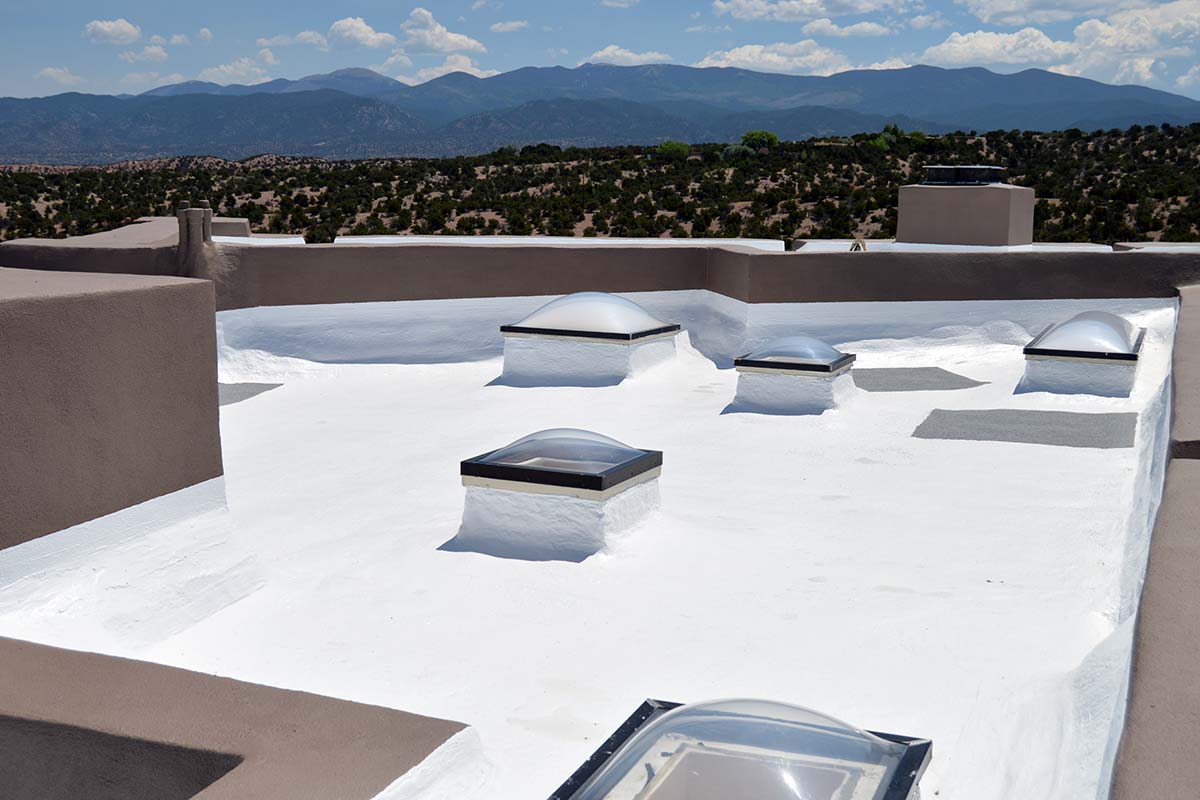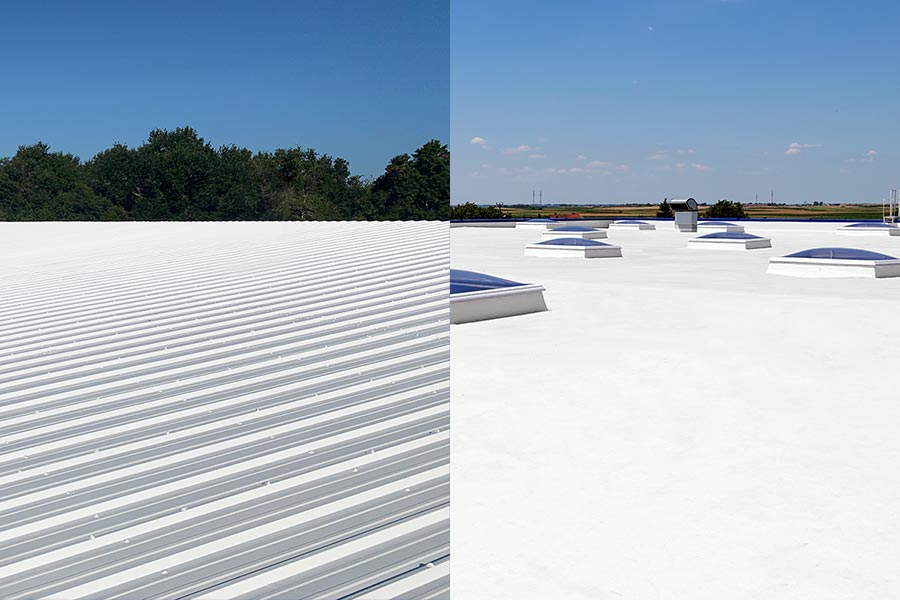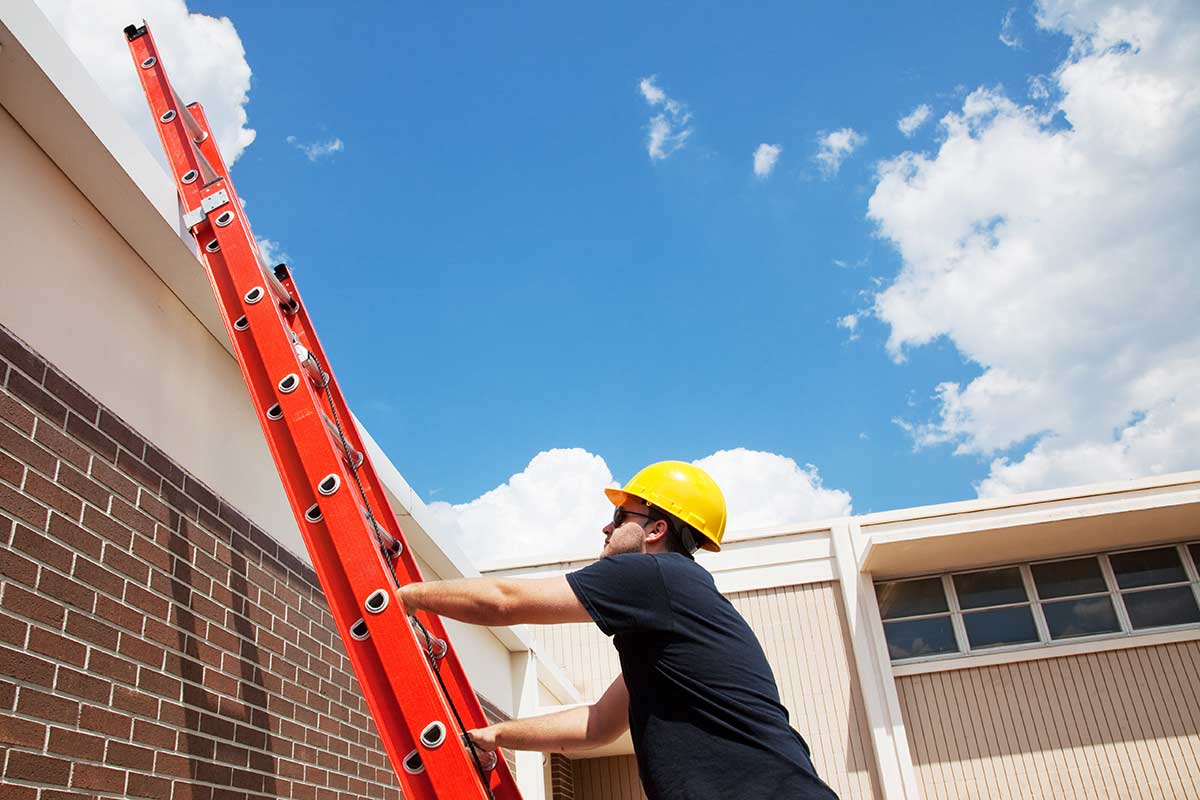
A cool roof is designed to reflect sunlight so that less heat is absorbed by the building. Most commercial and industrial buildings benefit from cool roofs, but building owners should consider climate factors before deciding to install one.
Similar to how wearing light colors can keep you cool on a sunny day, cool roofs use bright solar-reflective surfaces to maintain lower temperatures. A standard dark roof can reach temperatures of 150°F or more in the summer, while a bright white cool roof under the same conditions can stay 50° cooler.
“Coolness” is measured by two properties: solar reflectance and thermal emittance. Both properties are measured from 0 to 1. The higher the value, the cooler the roof.
The Benefits of a Cool Roof
- Reduced energy bills by 10%-30%
- Improved comfort for indoor spaces without air conditioning
- Lower maintenance costs
- Extended roof life
Environmental Benefits
- Reduced Urban Heat Island Effect (occurs when an urban environment is hotter than surrounding rural areas due to black surfaces)
- Less peak electricity demand which helps prevent power outages
- Alleviated air pollution and global warming concerns by lowering CO2 and other emissions
Other Considerations
Many cool roofs cost the same amount as other comparable roofing materials, so for cool roofs that cost slightly more, the difference can be quickly recovered in savings from lower energy costs, rebates and incentives, HVAC equipment downsizing, and extended roof lifetime.
It’s important for building owners to consider the climate. Cool roofs achieve the greatest cooling savings in hot climates, but may not always decrease energy costs in cooler climates. While cool roof owners may pay slightly more to heat their buildings during the winter, the amount is usually insignificant compared to the energy savings during the summer.
In warm, moist locations, cool roofs can be more susceptible to algae or mold growth than conventional roofs. American WeatherStar roof coatings are specifically engineered with unique chemicals to prevent mold or algae growth on the system.
Cool Roof Rating Council
The Cool Roof Rating Council (CRRC) was created in 1998 to develop accurate and credible methods for evaluating and labeling the solar reflectance and thermal emittance (radiative properties) of roofing products and to disseminate the information to all interested parties. For more information on cool roofs, visit the Cool Roof Rating Council website.
Frequently Asked Questions About Cool Roofs:
Are all of the roofing products on the CRRC Rated Products Directory “cool”?
No. The CRRC does not set a definition for “cool.” We leave this to the code bodies and programs that reference our rating system. The CRRC simply lists the measured radiative property values on our Directory. A product’s placement on the CRRC Directory does not mean that the product is “cool” as defined by any particular code body or program.
Are cool roofs affordable?
Yes. Many cool roof varieties cost the same amount as other comparable roofing materials, and for those that cost slightly more, the difference can be quickly recovered in savings from reduced energy costs. Additionally, some electric utilities offer rebates, which reduce the cost of cool roofing materials.
Will cool roofs significantly increase my heating bills in the winter months?
No. The roof is an insignificant source for heat gain in winter. While cool roof owners may pay slightly more to heat their homes, this amount is usually insignificant compared to the cooling energy savings during the summer.
Does the CRRC manufacture or sell roofing materials?
No. We strictly maintain a rating system for the radiative properties of roof surfaces. We do not make, endorse, or sell any roofing products.
Can the CRRC help answer my product questions?
Yes. Our website can help answer general questions you have about available roofing options. Our online Product Directory can help you find products that meet your needs and compare the radiative properties of different choices.
Can the CRRC tell me which product is best for me?
No. We cannot recommend specific product brands or types. Once you have looked at our Rated Products Directory we encourage you to contact the manufacturer directly, or contact a private contractor or roof consultant to assist in choosing the “coolest” product for your home or project.
Is the CRRC a “California” program?
No. While it is true that California’s Building Energy Efficiency Standard, Title 24, refers exclusively to the CRRC’s Product Rating Program for cool roof credit, aside from the location of the CRRC headquarters office in Oakland, CA, the CRRC is not a “California” program. Any city or state code or program, mandatory or voluntary, may reference CRRC’s Product Rating Program.
If you think a cool roof will benefit your commercial building, schedule a free inspection with an American WeatherStar Approved Contractor. They will determine an appropriate solution for your roof and provide you with a detailed overview of the installation process so you’ll know exactly what to expect.
Related Posts
Which Roof Coating Performs Best?
There are many variables to consider when it comes to the performance, longevity, and suitability of an elastomeric roof coating. Below, we…
The Impact of Reflective Roof Coating Systems
One of the great aspects of a reflective roof coating is the profound impact it can have on a building’s interior climate. The majority of…
How to Establish a Roof Maintenance Program
The most important reason for establishing a roof maintenance program is to protect the capital investment of a new roof. Proper maintenance…



